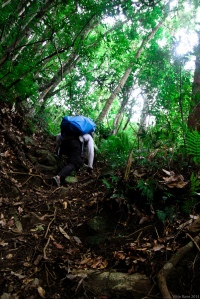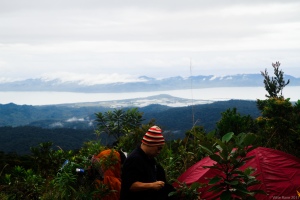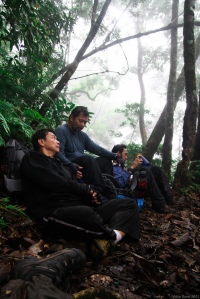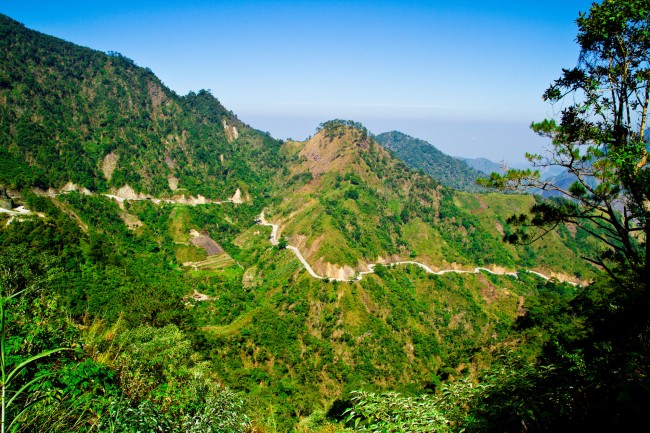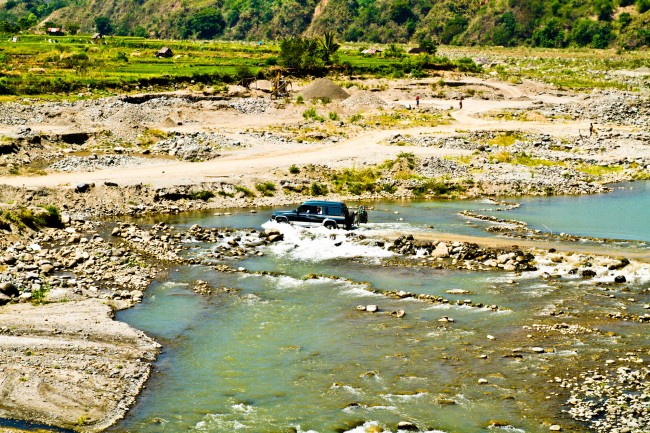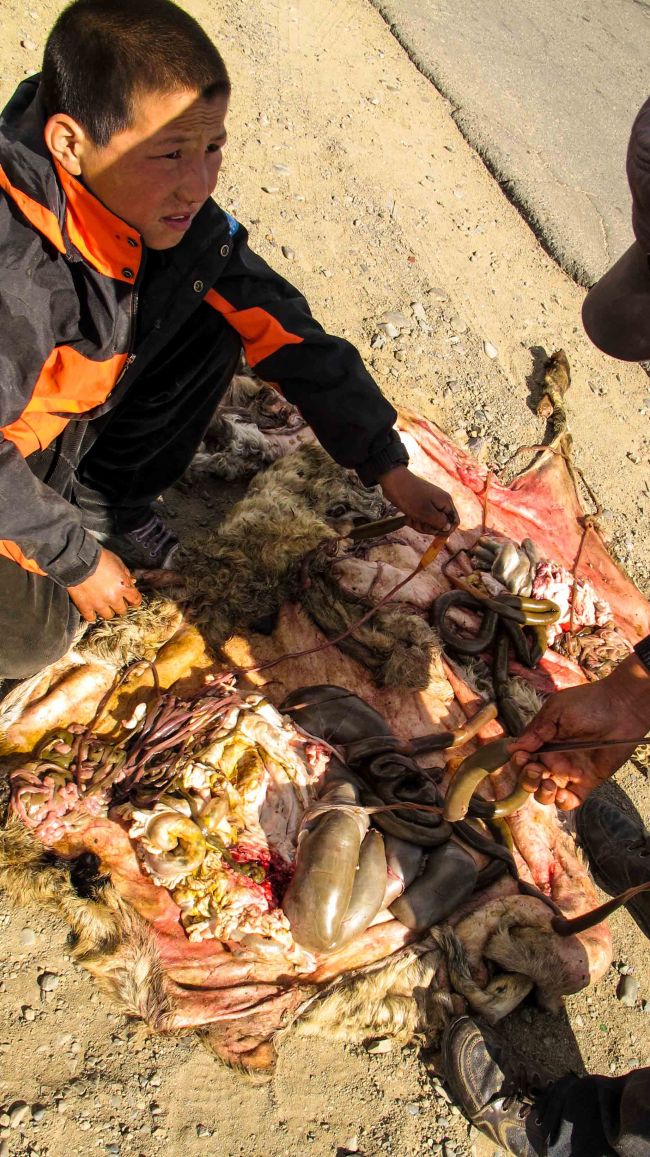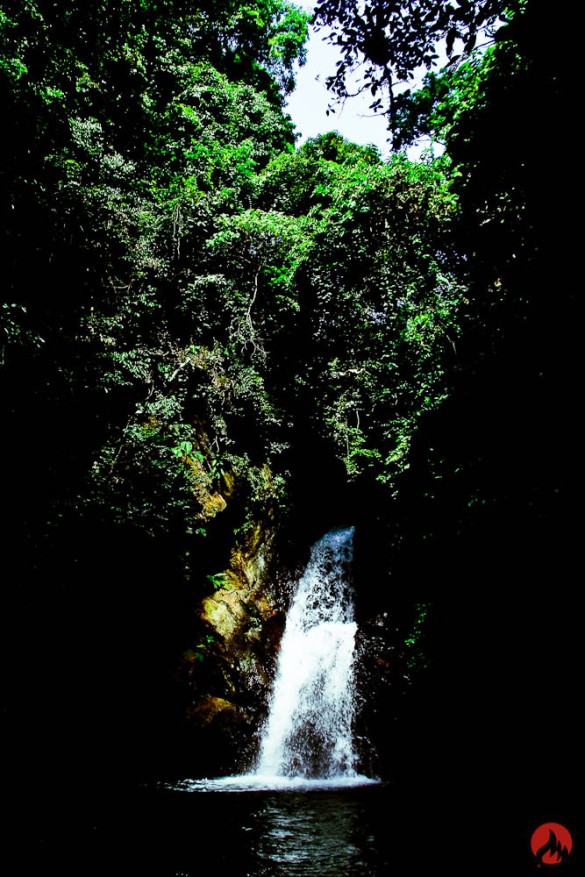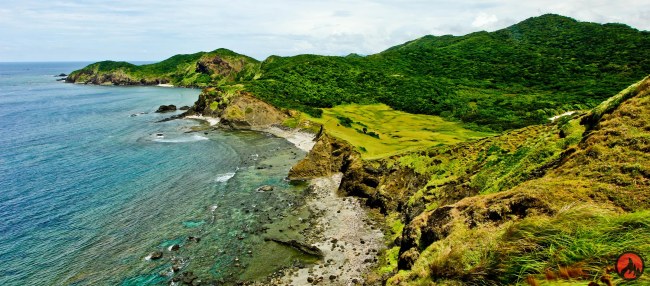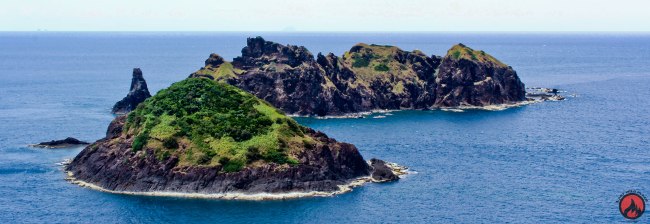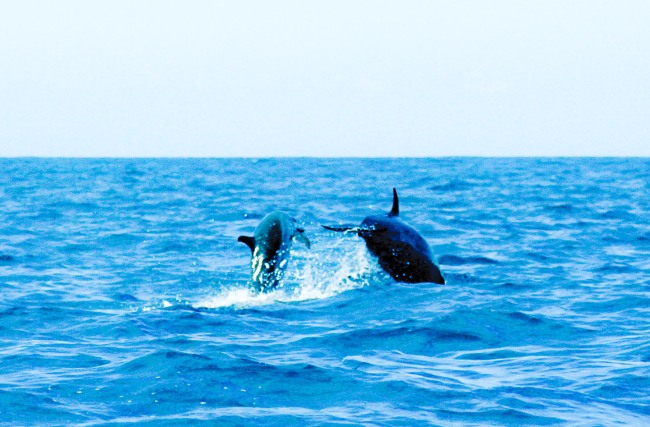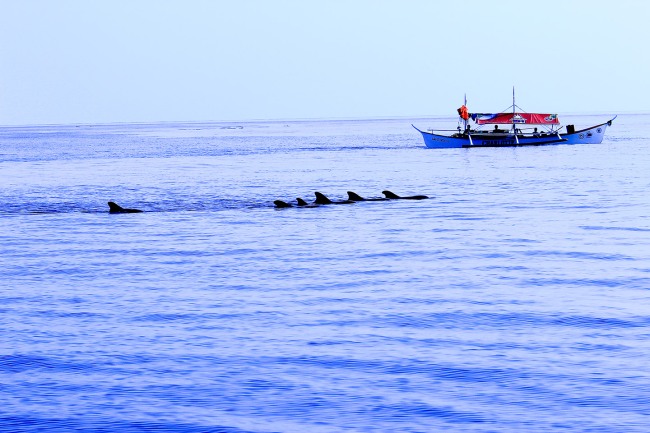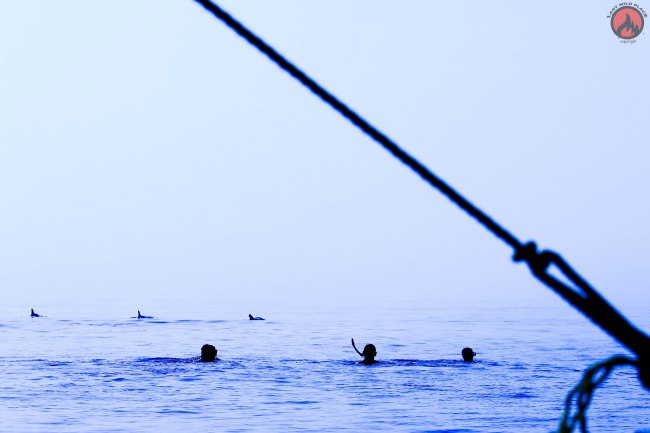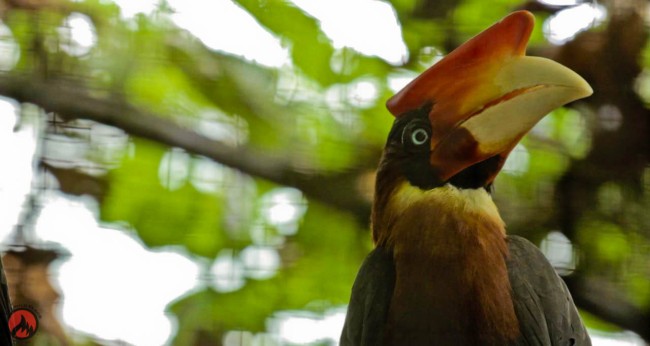All our climbing & camping gear is loaded onto the truck and we climb along like cargo. It’s a bumpy ride along the way but we finally see our quarry hiding behind the clouds. Mt. Anacuao, meaning “lost child” in Dumagat, in Aurora Province beckons us into her arms and we are excited at the prospect of climbing her. Base camp for the climb is Bulawan Falls and we are busily preparing for our climb to the summit the following day.
The roughness of the climb is evident right away as we snake our way along the river. Boulders everywhere of all sizes, moss covered and slippery, slipping in and out of the canopy and crisscrossing the river. It’s a real challenge trying to get a good grip among the rocks and the riverbed with the fast current. I wedge my feet in between the rocks to get a better grip but its squeezing my poor bunions to death. All I keep thinking was that I used the wrong shoes and that my feet would be wet the entire climb.
Real glad to get away from the rocks pounding my feet but my worries quickly disappear as I see our next hurdle, a steep ascent up a series of 3 hills. Towering trees draped with thick vines in an endless expanse of jungle. Surely this is better than the rocks and I quickly ascend up the scraggly trail and latch on to the vines and dirt. I wanted to keep my pace steady and take it step by step while trying to get into a rhythm. Focused intently on the trail, we were doing quick time according to Arse and that gave me some relief. It was all going swimmingly until I started getting clumsy and tripping all over the place. Inch by inch it was getting to be an ordeal trying to lift my feet and my mind kept wandering.
We are now entering the realm of mossy forest, you feel a different microclimate with the cool breeze and humidity. A quick check of my watch and we’re at 1100 meters elevation or 3,600 feet above sea level. Tree trunks are now covered with a thick layer of green hairy moss of all shapes. Mangled & twisted tree limbs and roots litter the trail like a scene from Lord of the Rings. Light rain comes and pelts your skin with icy intensity and the fog rolls in. The breeze picks up and it has a lighter feel on your nose. A sudden break from the trees and I find myself in a clearing of long cogon grass, we’ve reached the site of Camp 1 and it took 8 hours to get here. All 3 of us pick a spot below the ridge and just admire the view for half an hour. Arse comes over and calls out “Welcome to Mt Anacuao. Congratulations, you made it”.
A quick breakfast and we were preparing for our climb back down. The thing with mountaineering is that they always tell you about the way up the summit and the exhilaration of reaching it. What they fail to let you know is that the descent from the summit is always the most difficult part of the entire climb. This is where every inch of your body feels every bump, slide, twitch, twig that you encounter. The ground is damp and muddy with a lot of dead leaves and hidden roots. I do a spread-eagle with my back turned to get a better grip of the vines and roots for the steep descent. Everything is conspiring to grab a hold of you along the trail: Spiky rattan vines called “tekateka” that grip your shirt, thorny palm fronds that grab your hands, broken tree limbs that look like spears and vines that coil up around your ankles. Frustration starts to set in as there seems to be an endless array of trails still to navigate.
Another 30 minutes of dodging the river and we finally glimpse the bridge to Bulawan Falls. Home at last, home at last! It was a grand adventure and Mt. Anacuao was a worthy opponent indeed. As we drive back to our car, I give another glance back to the mountain and I see her smiling at me. I know I have unfinished business with her and I will be back again Ms. Anacuao.




